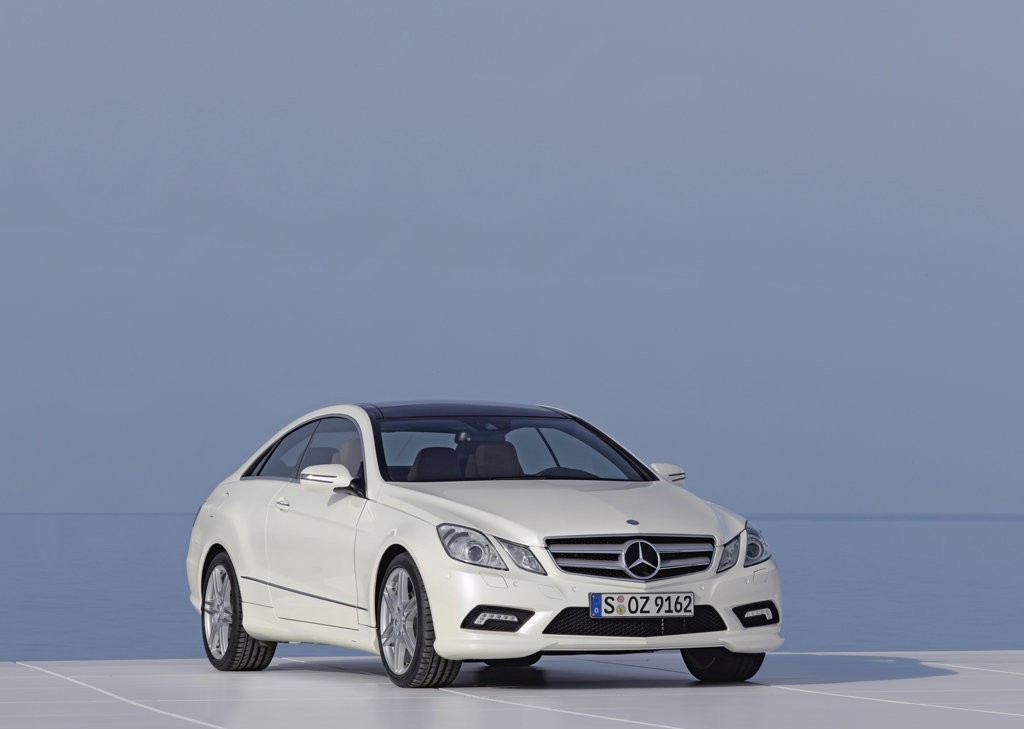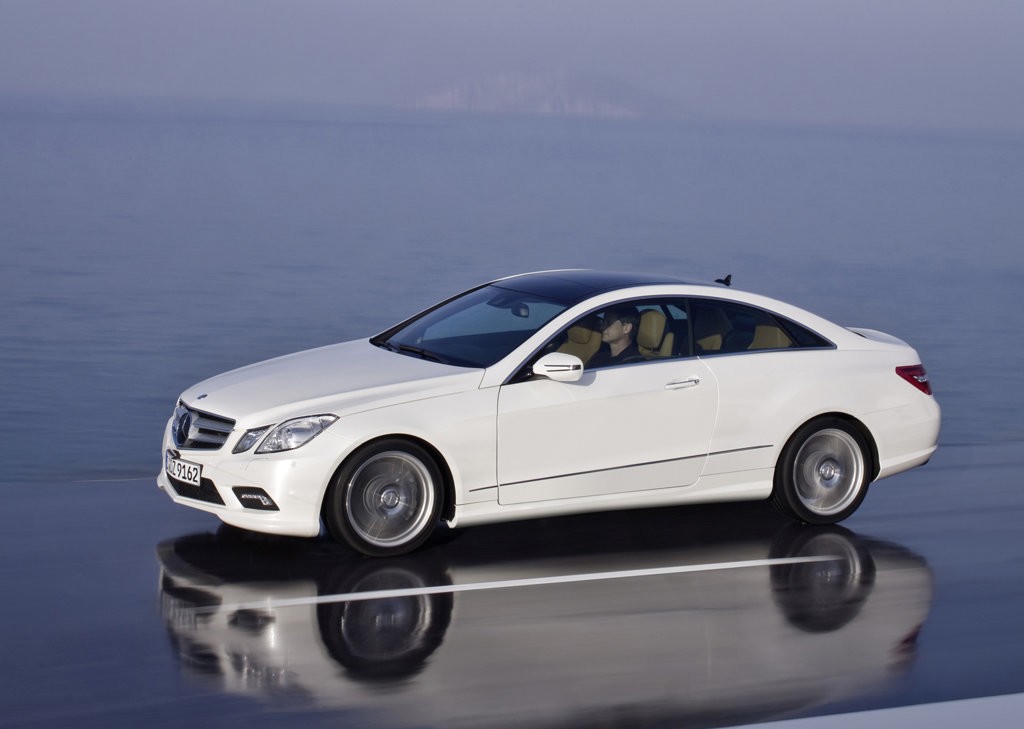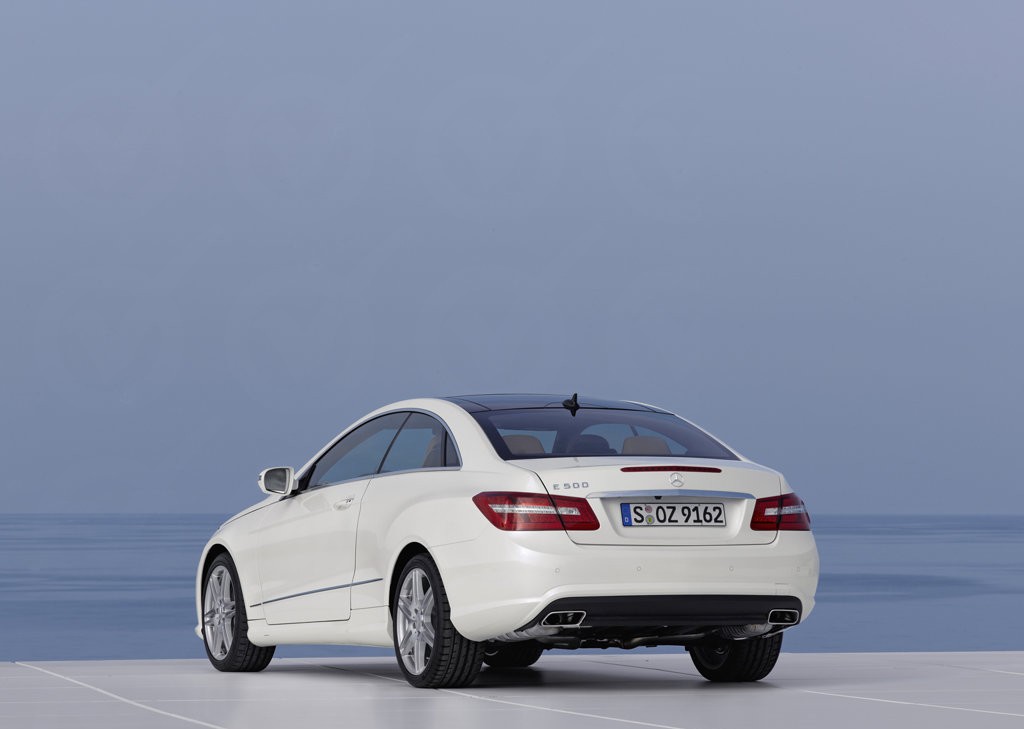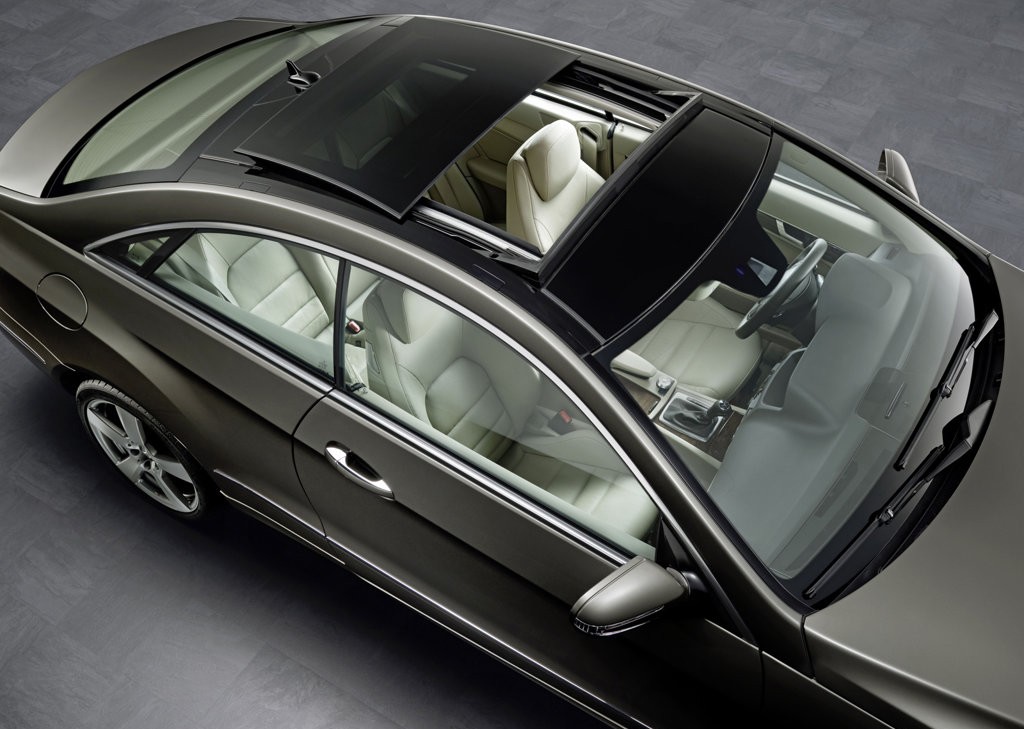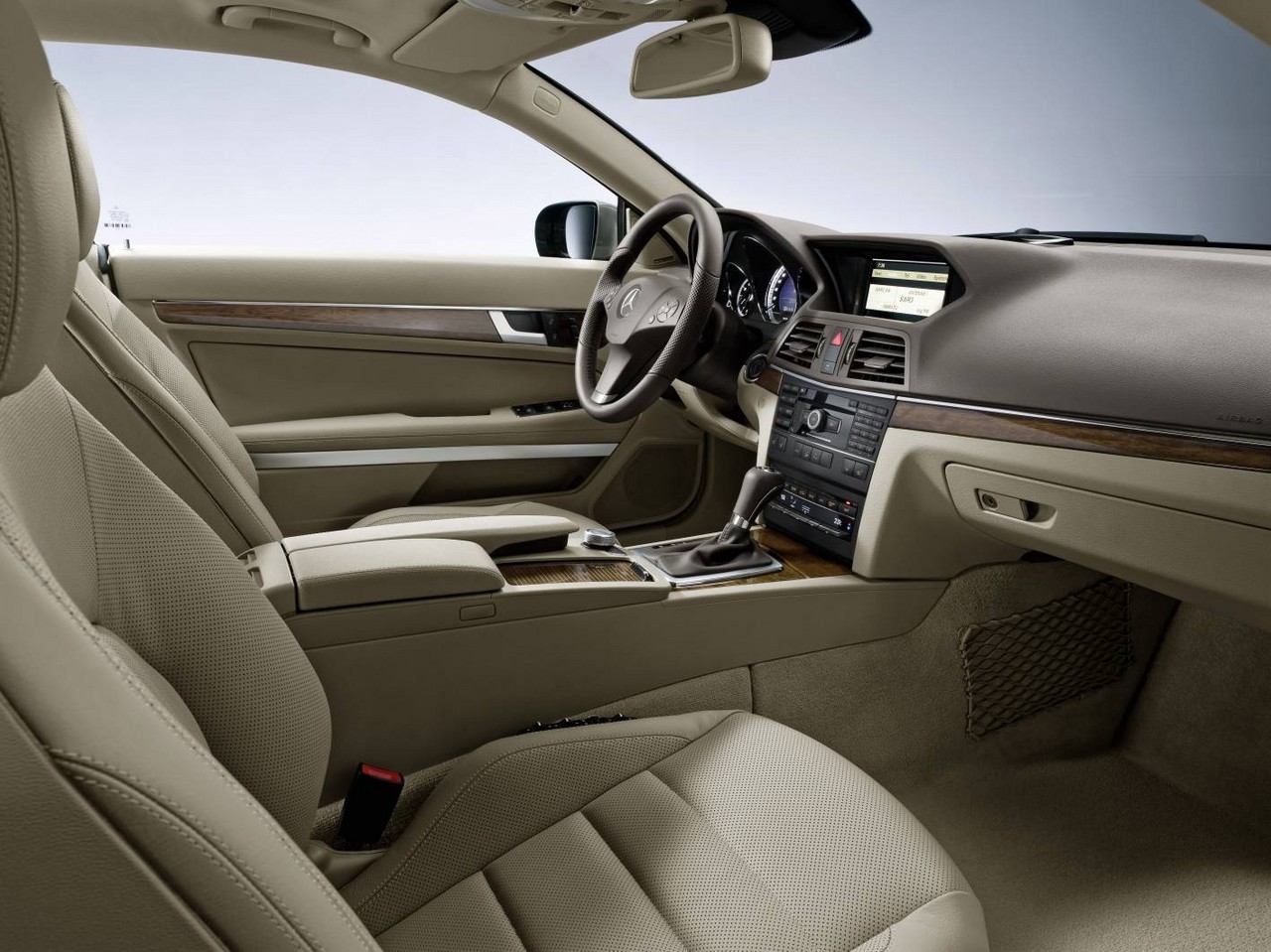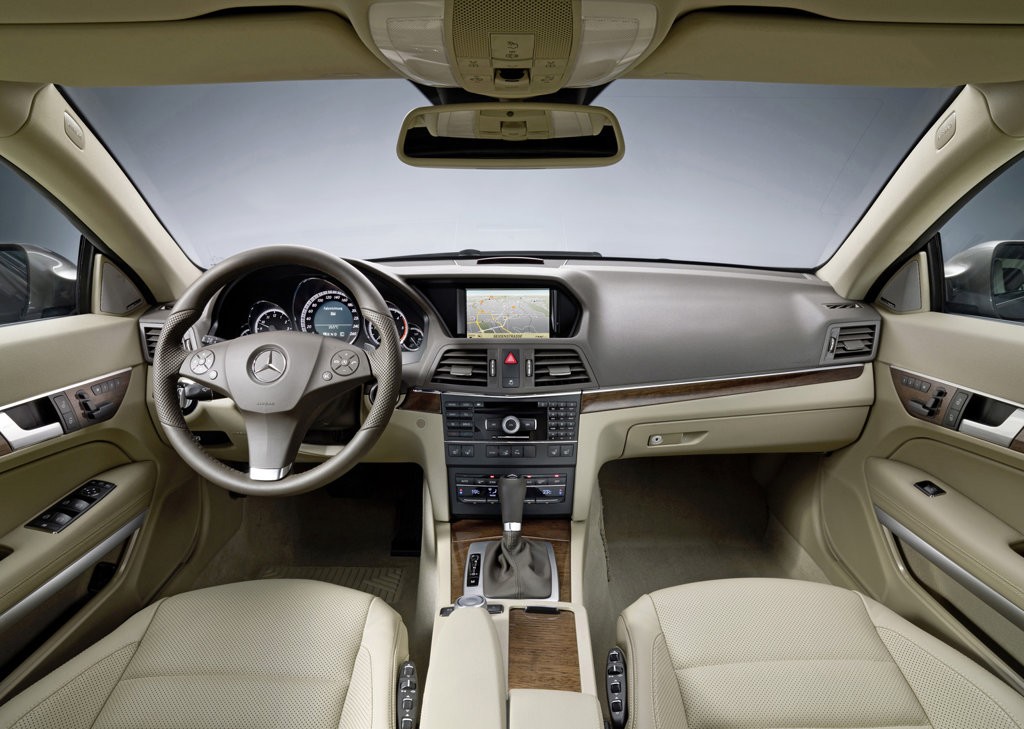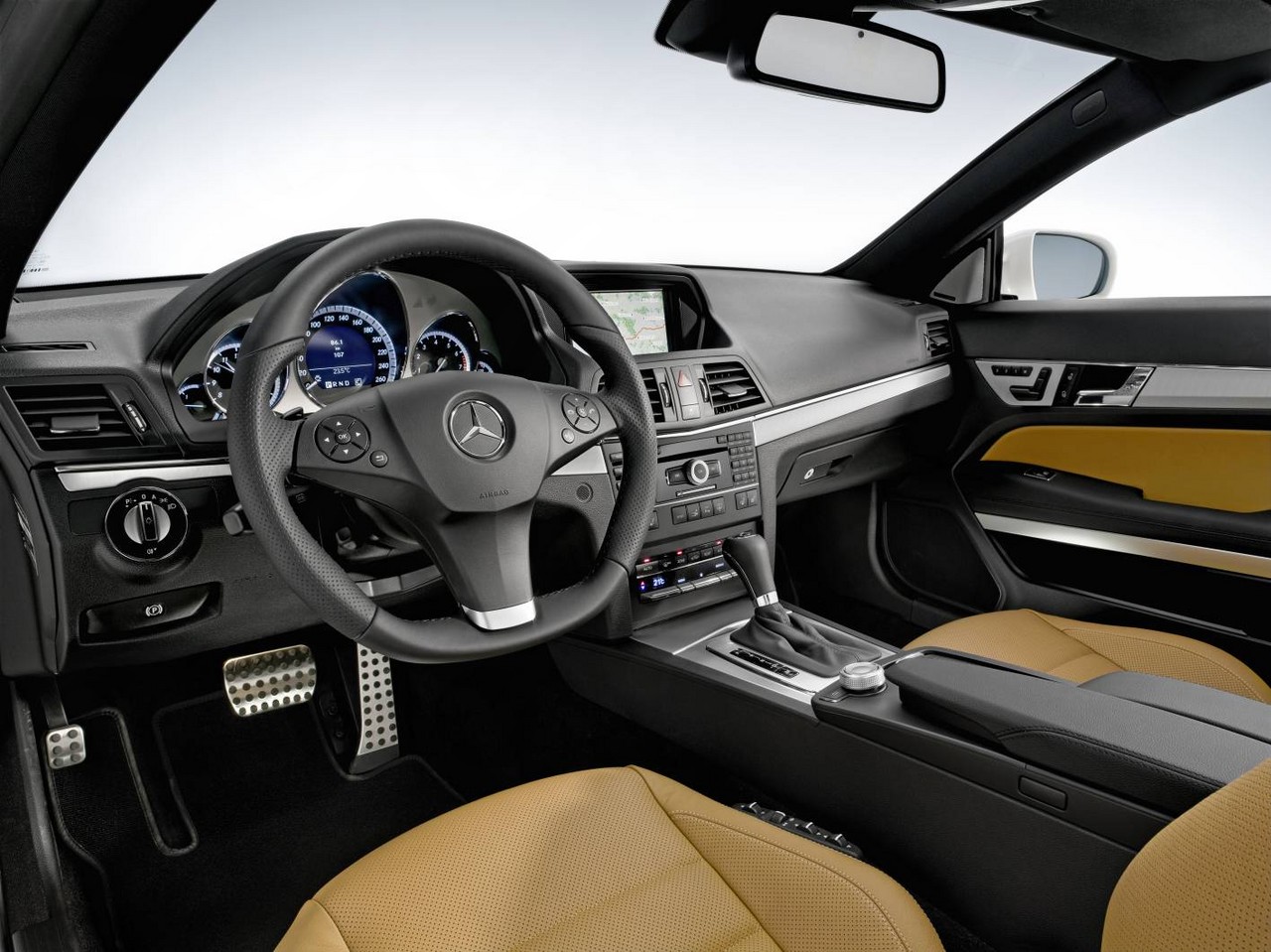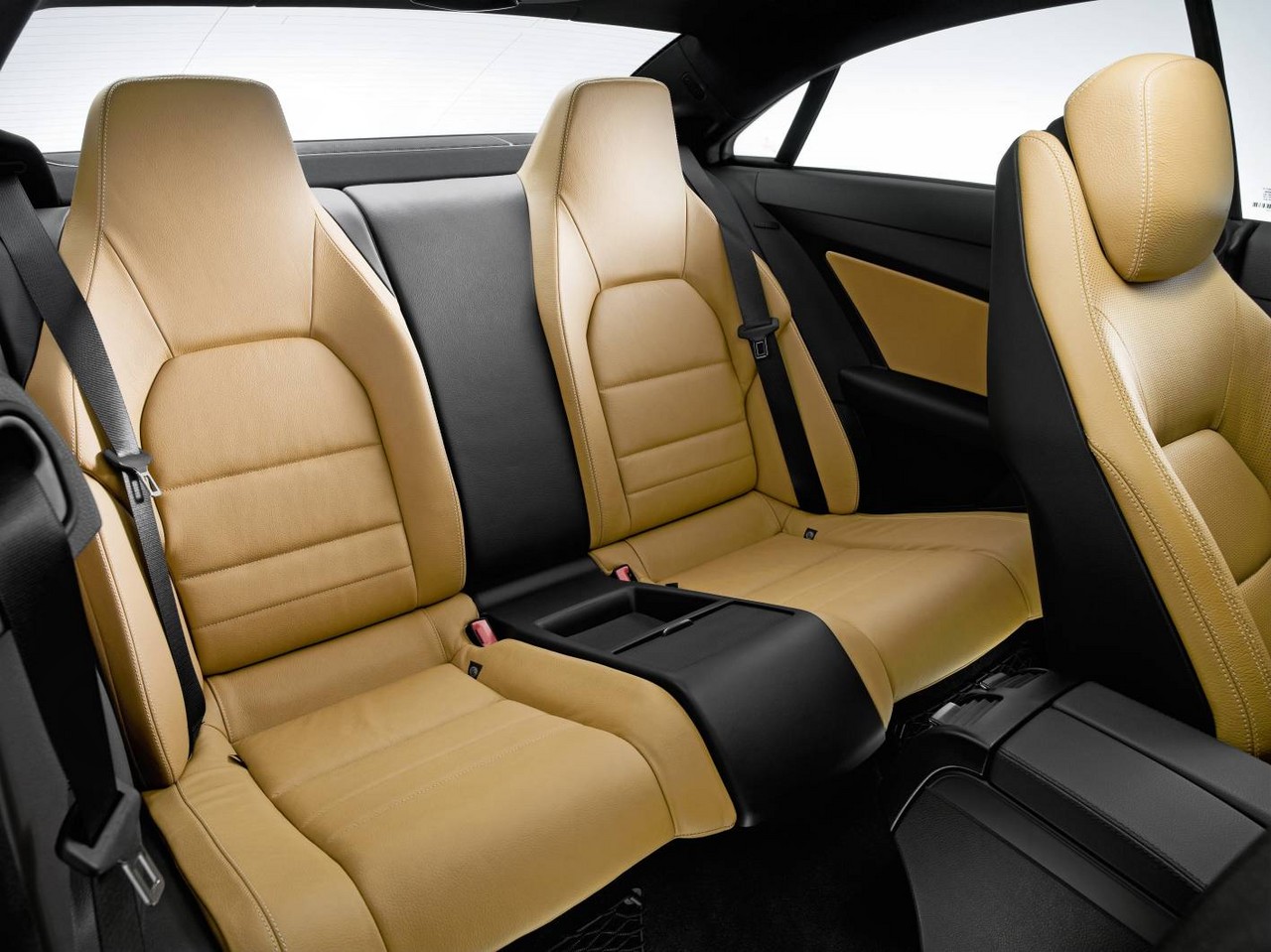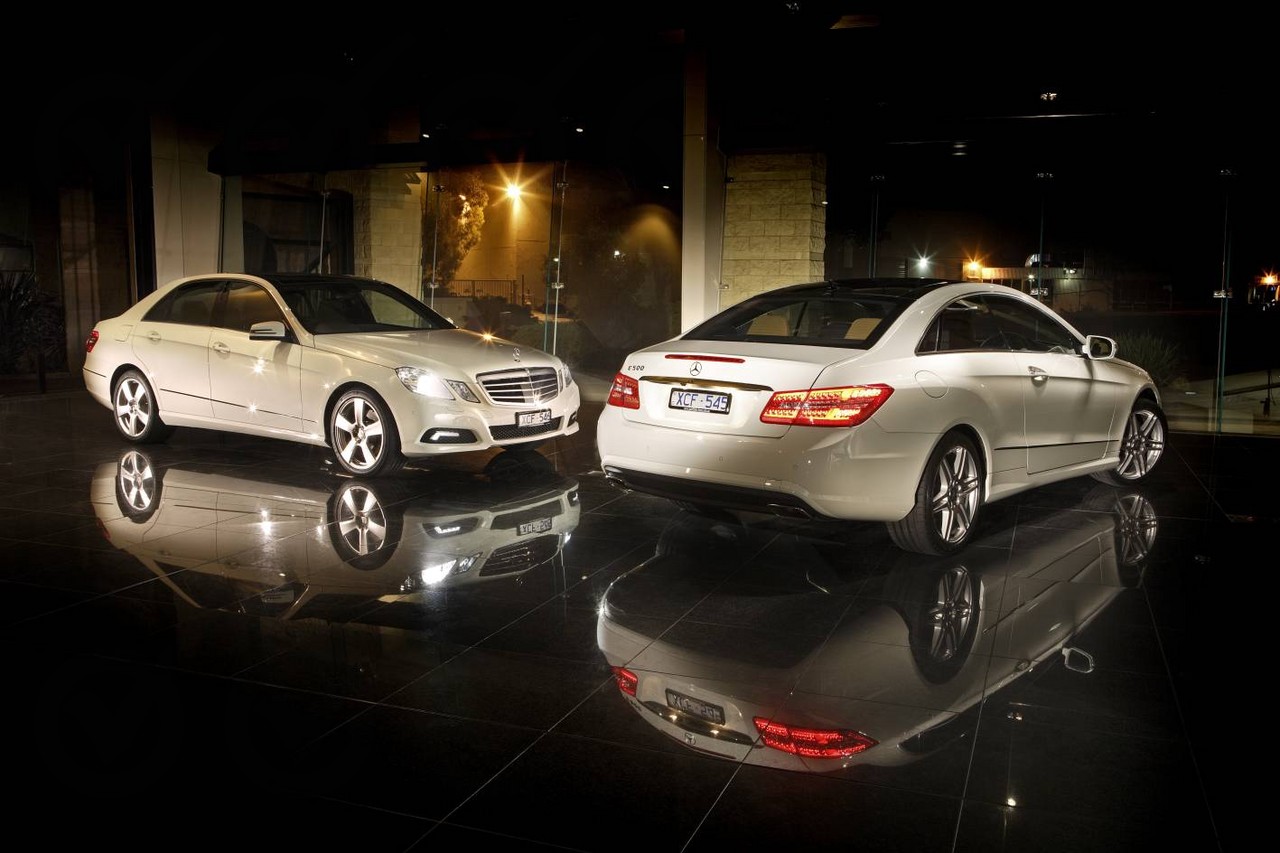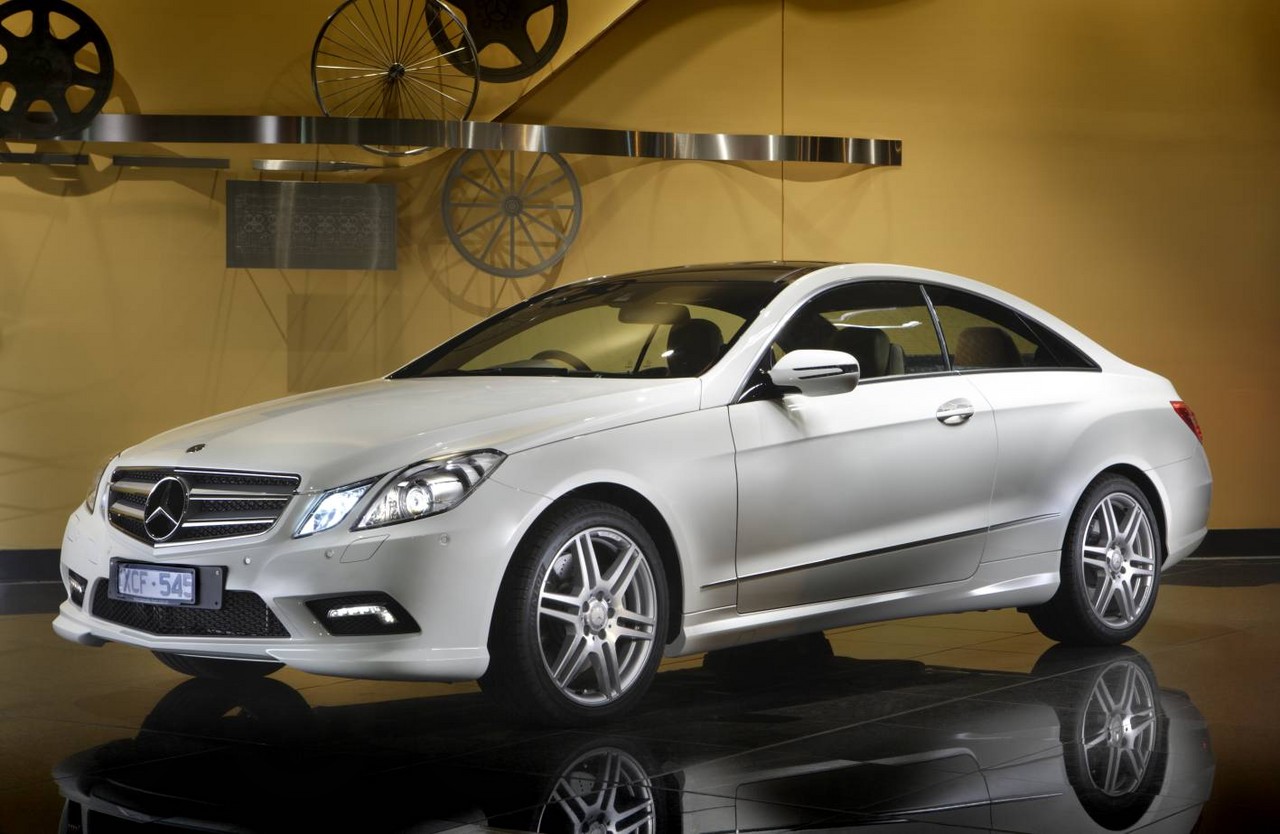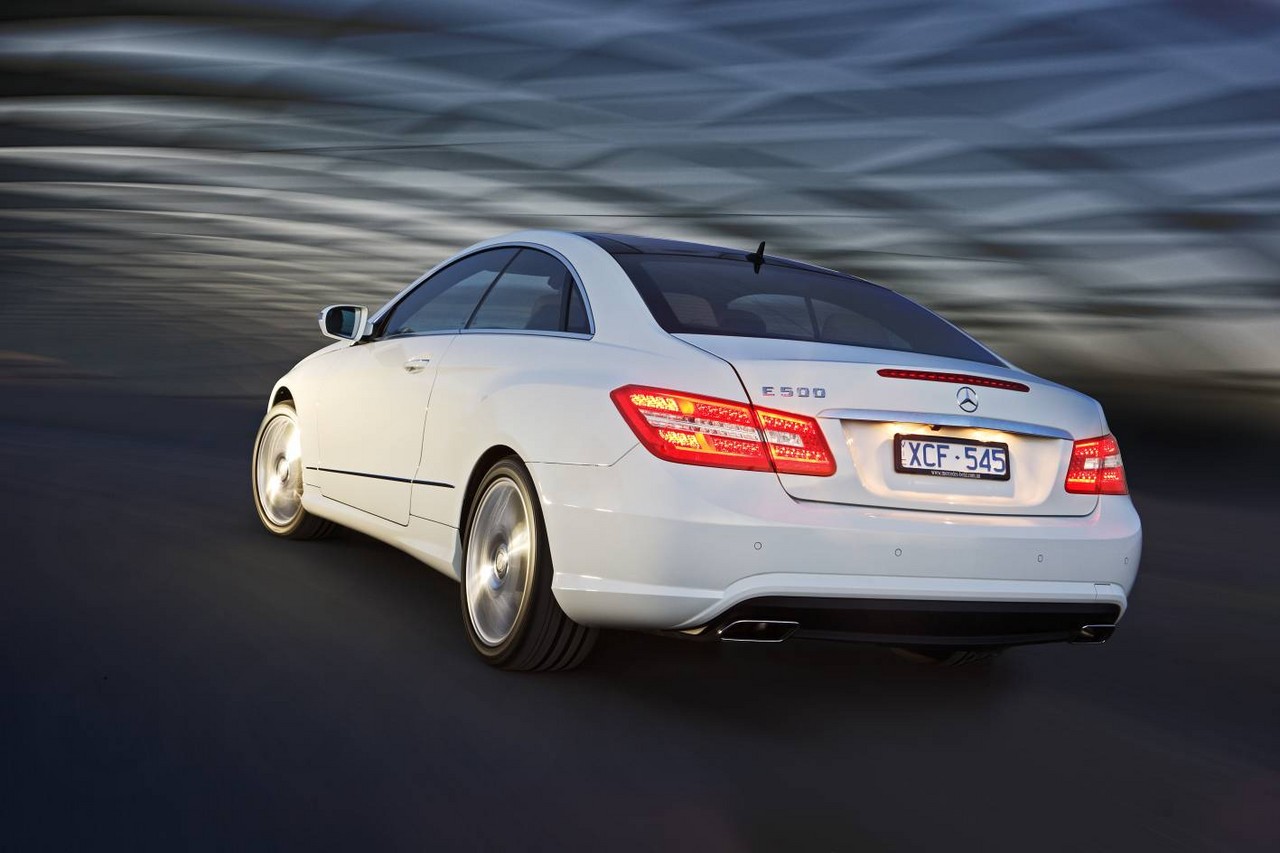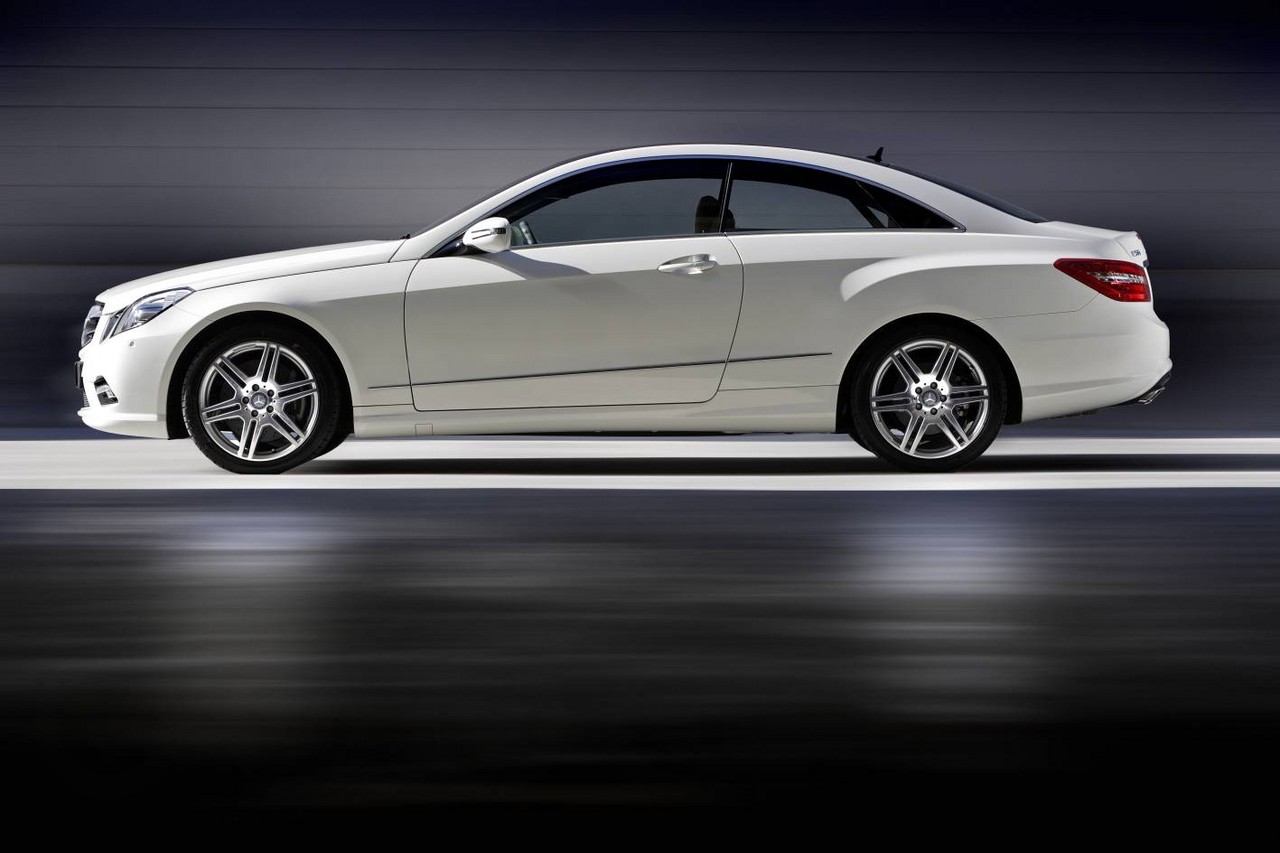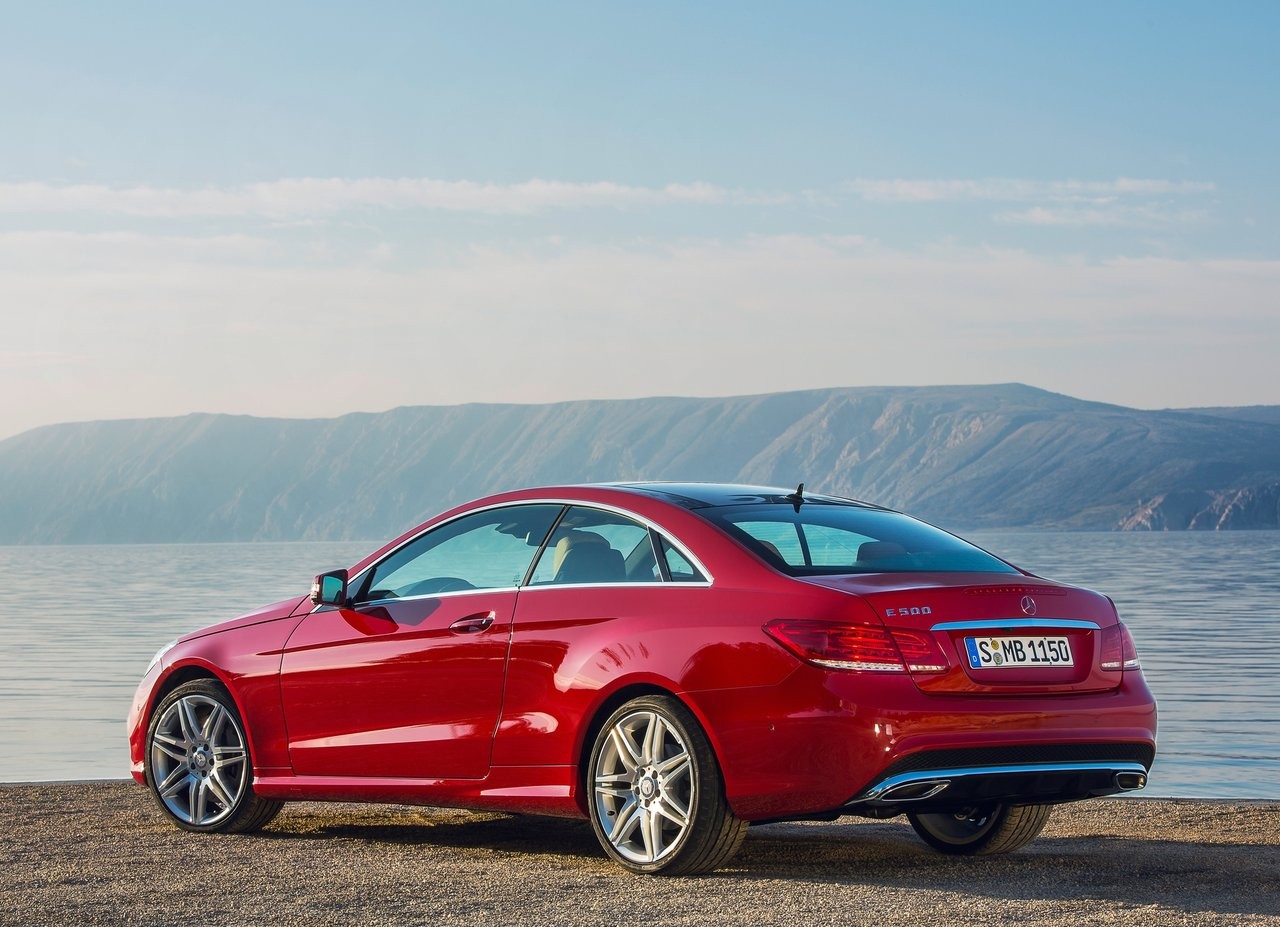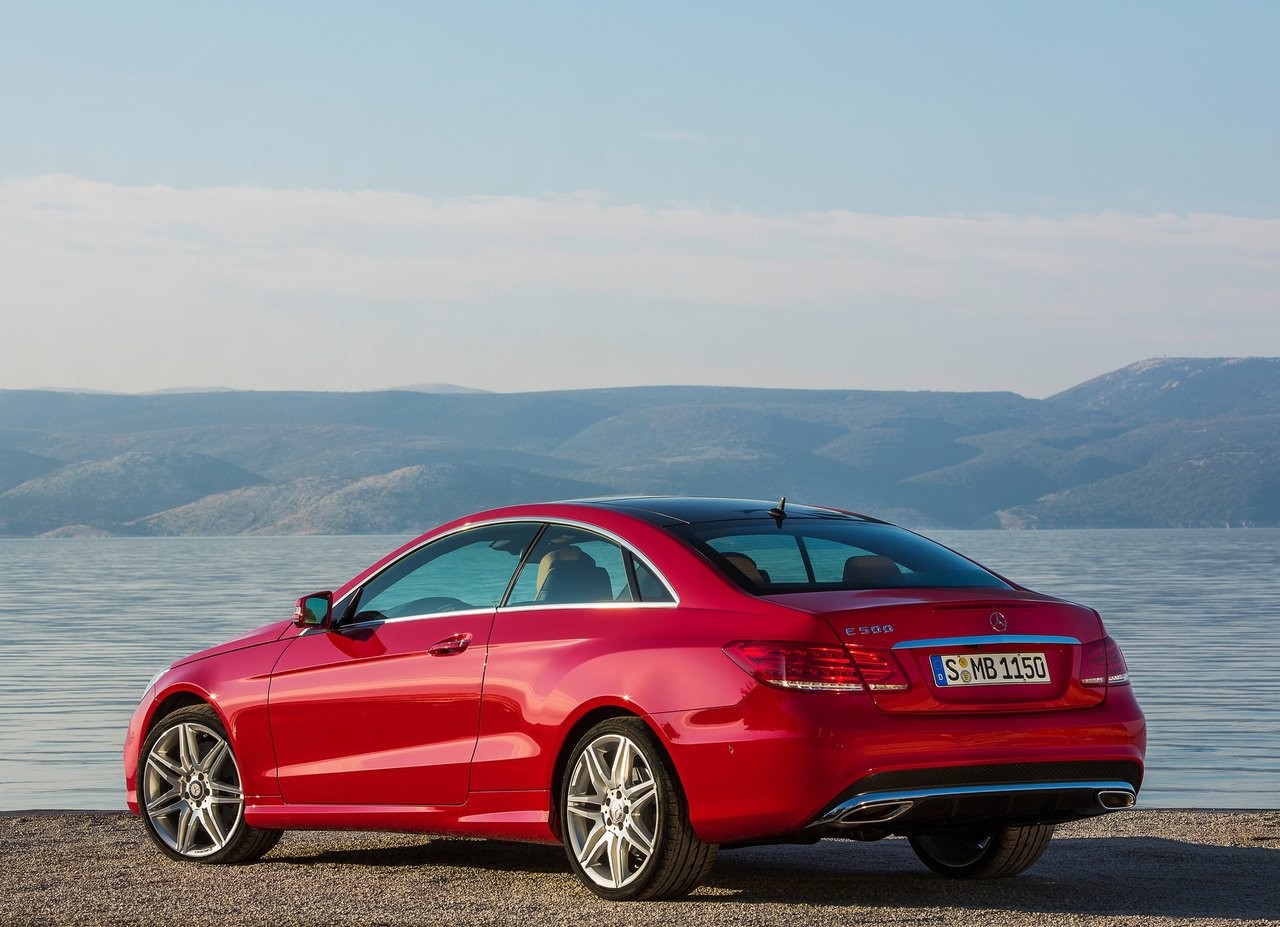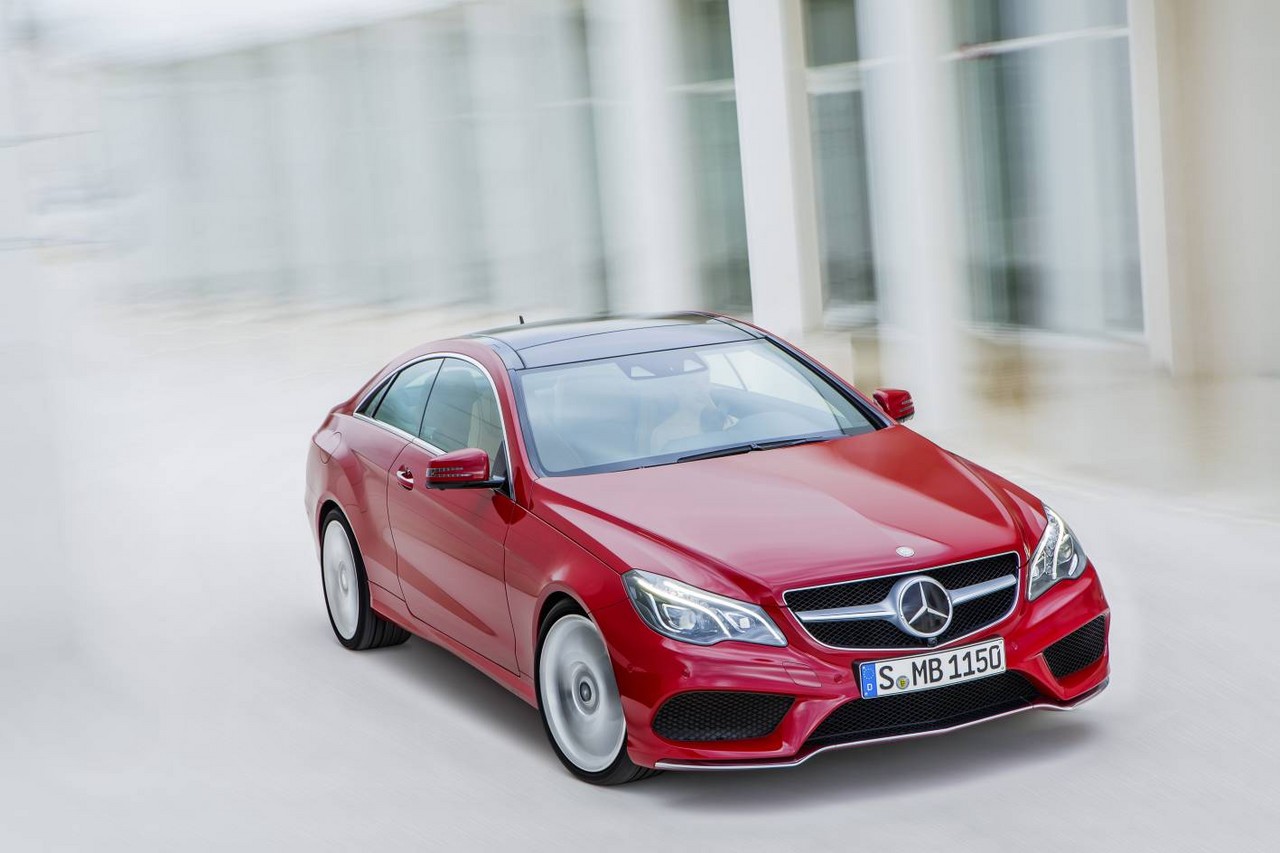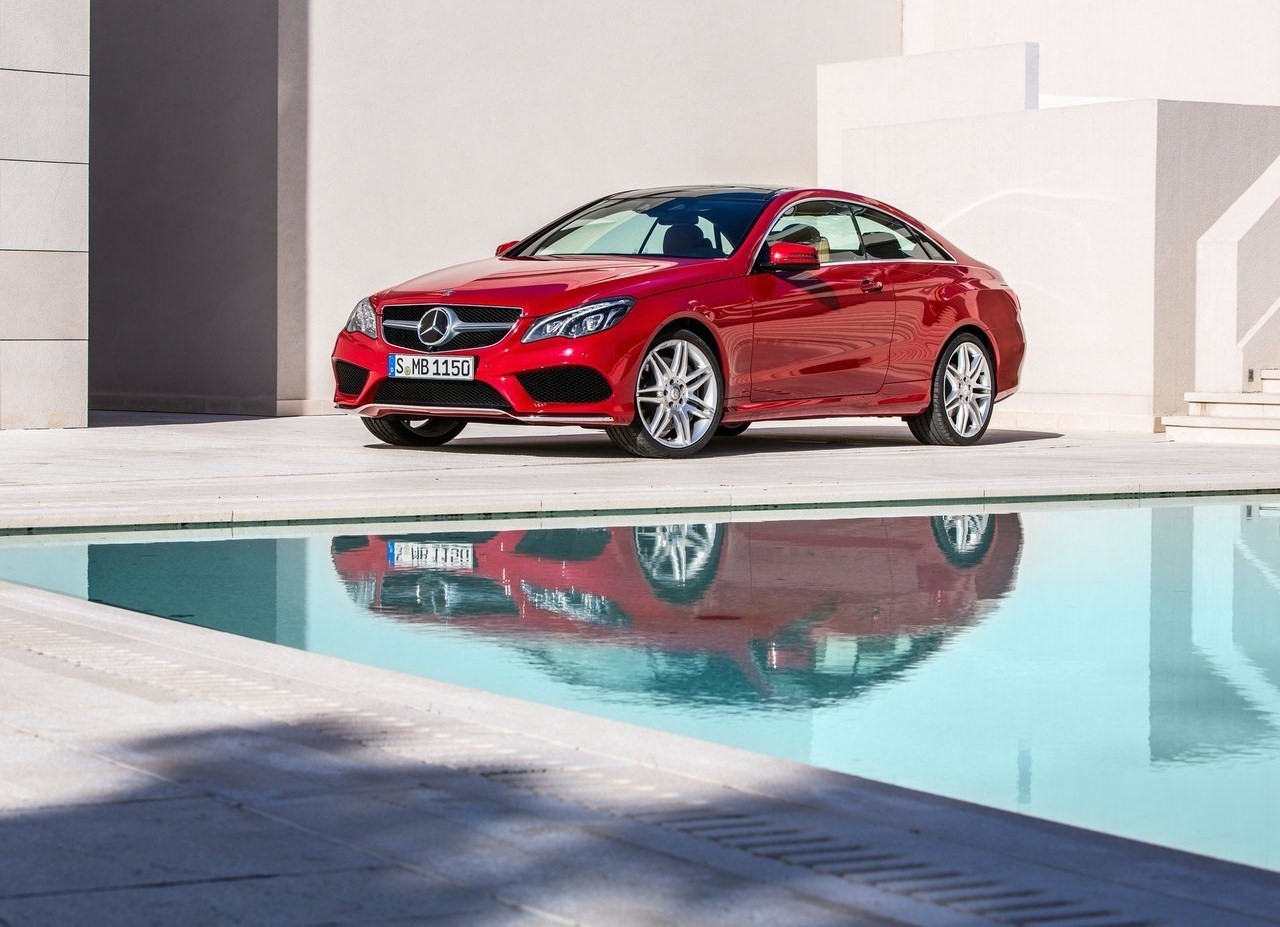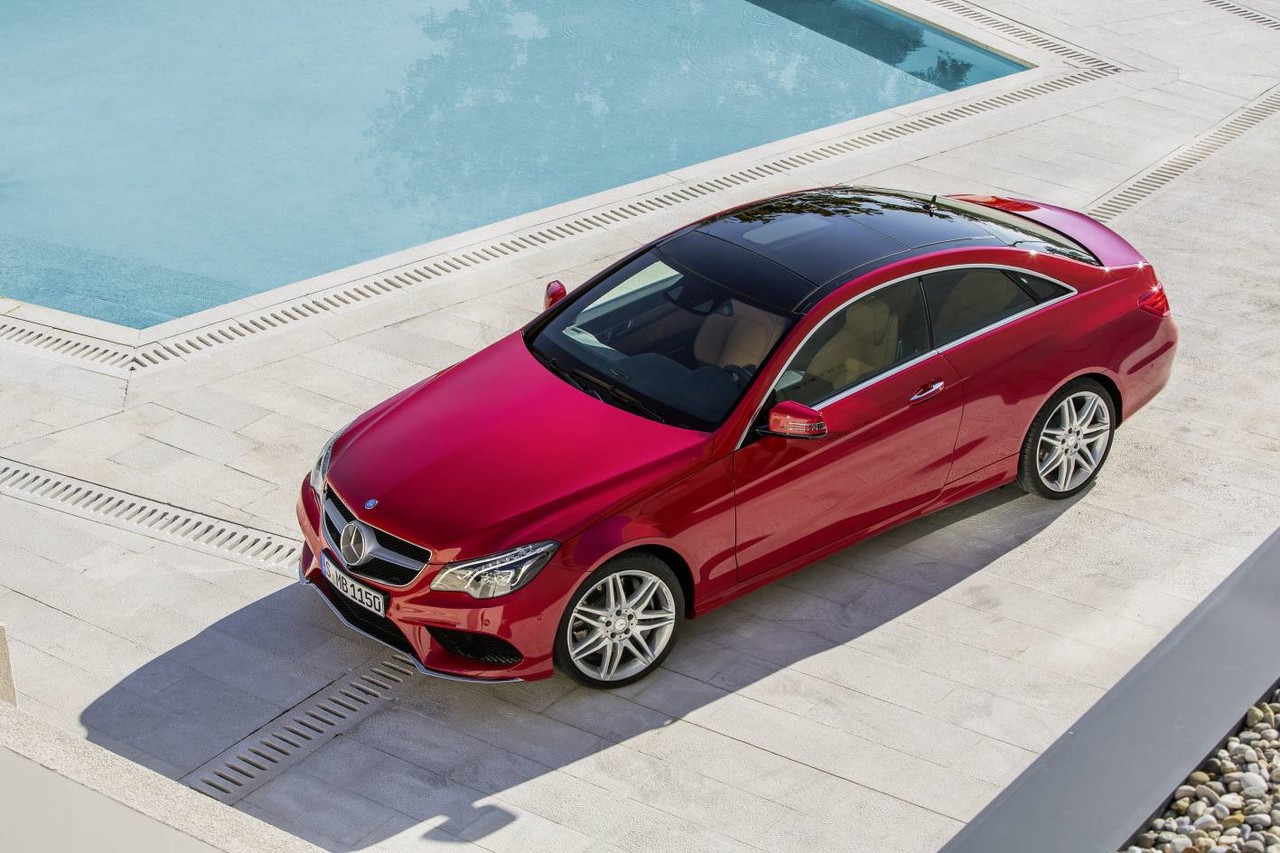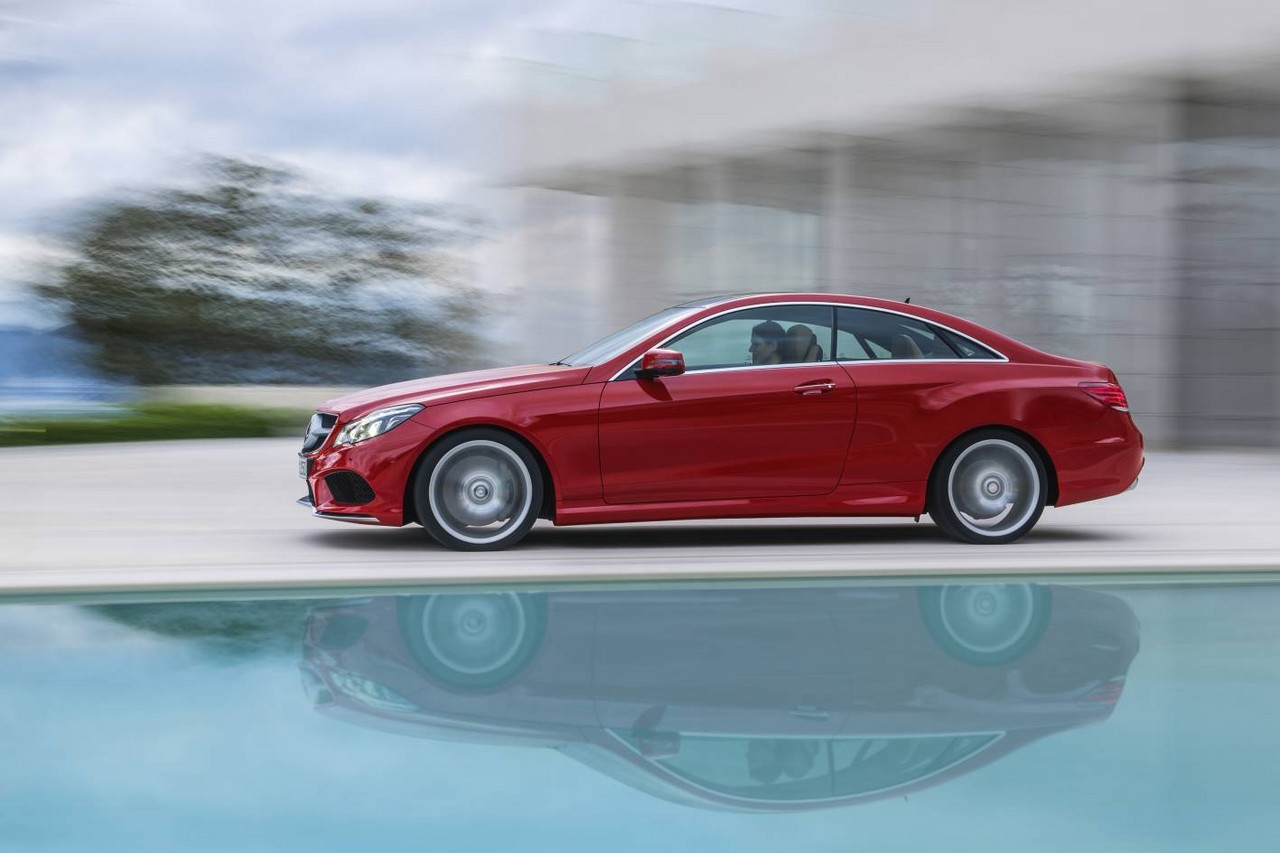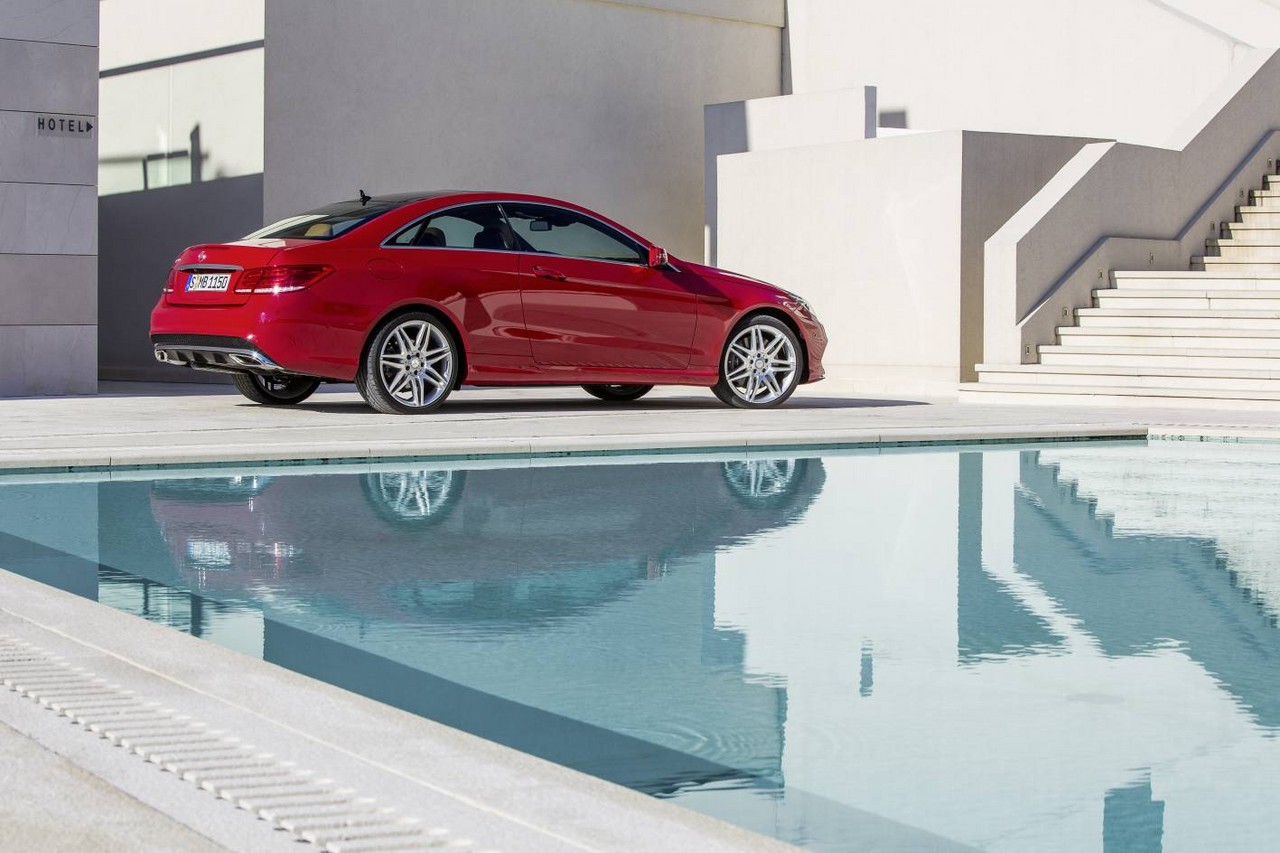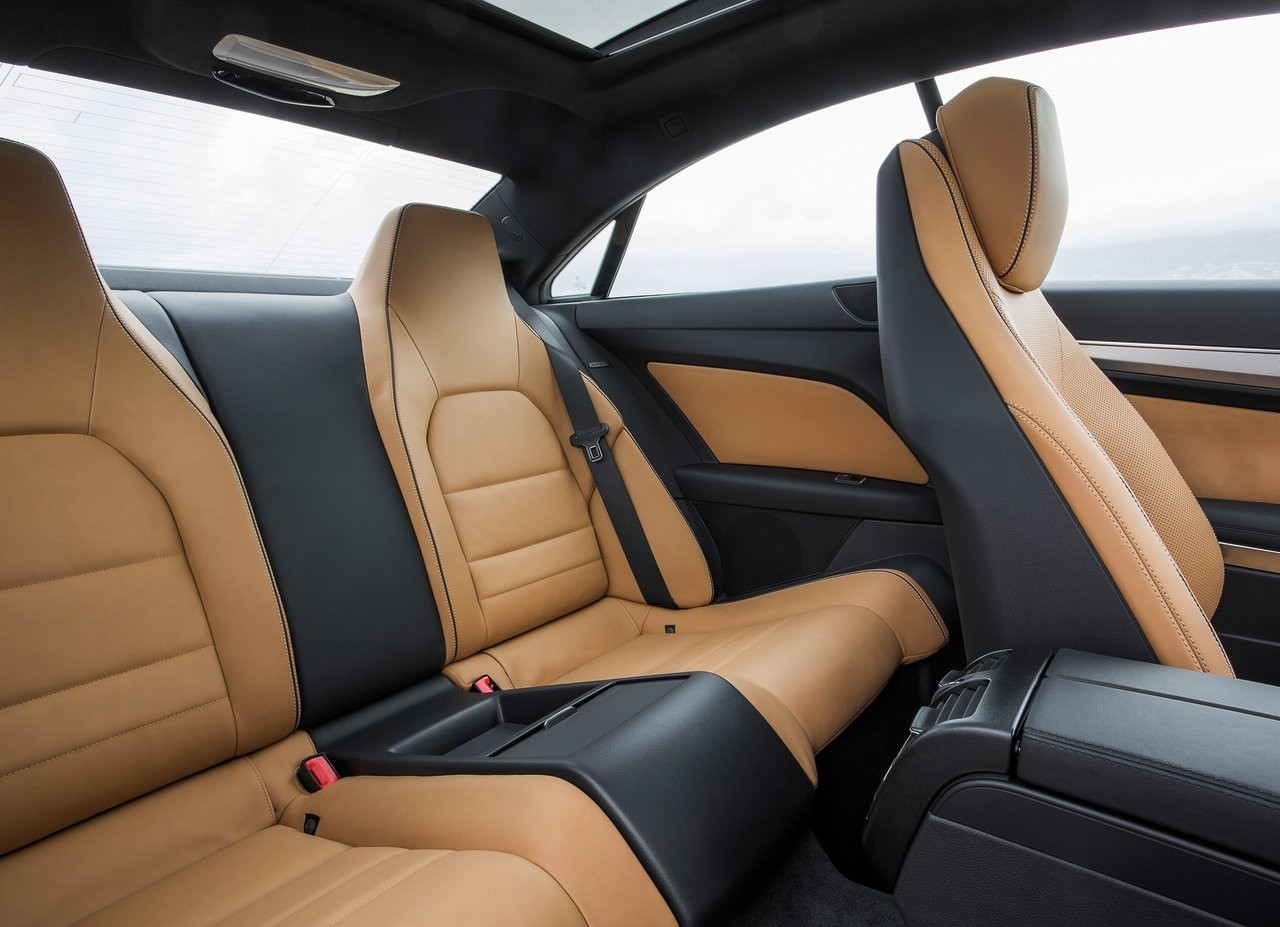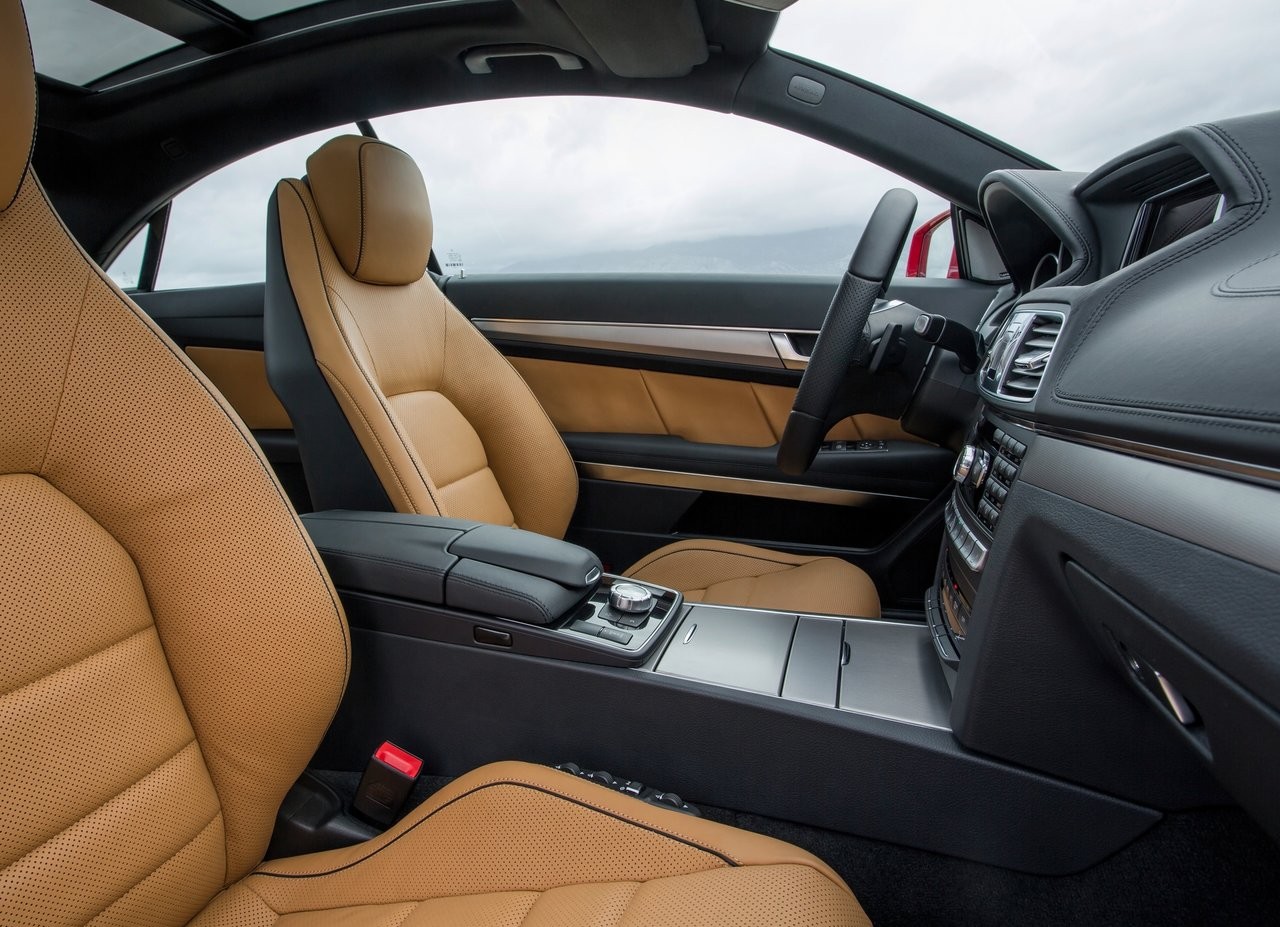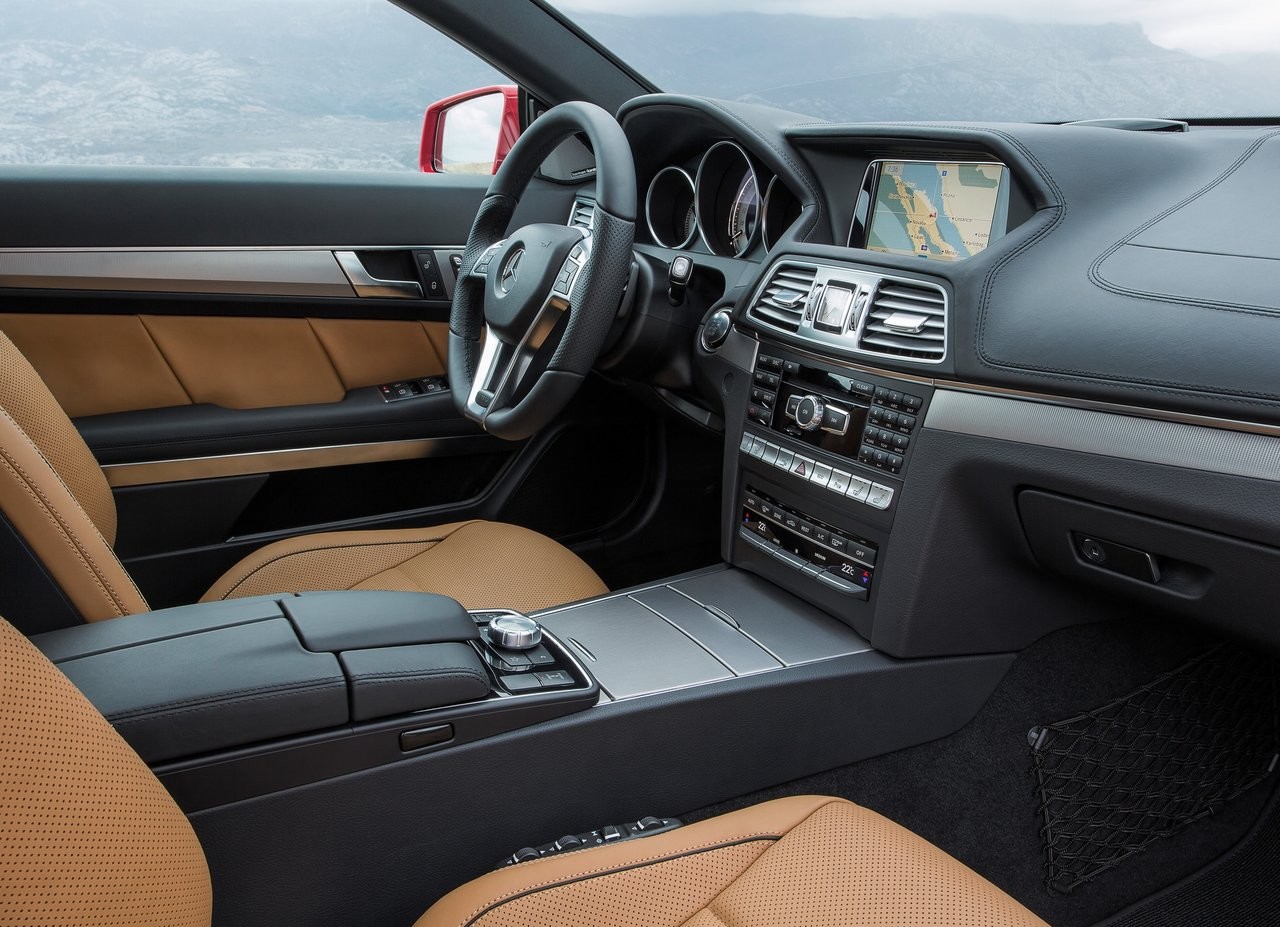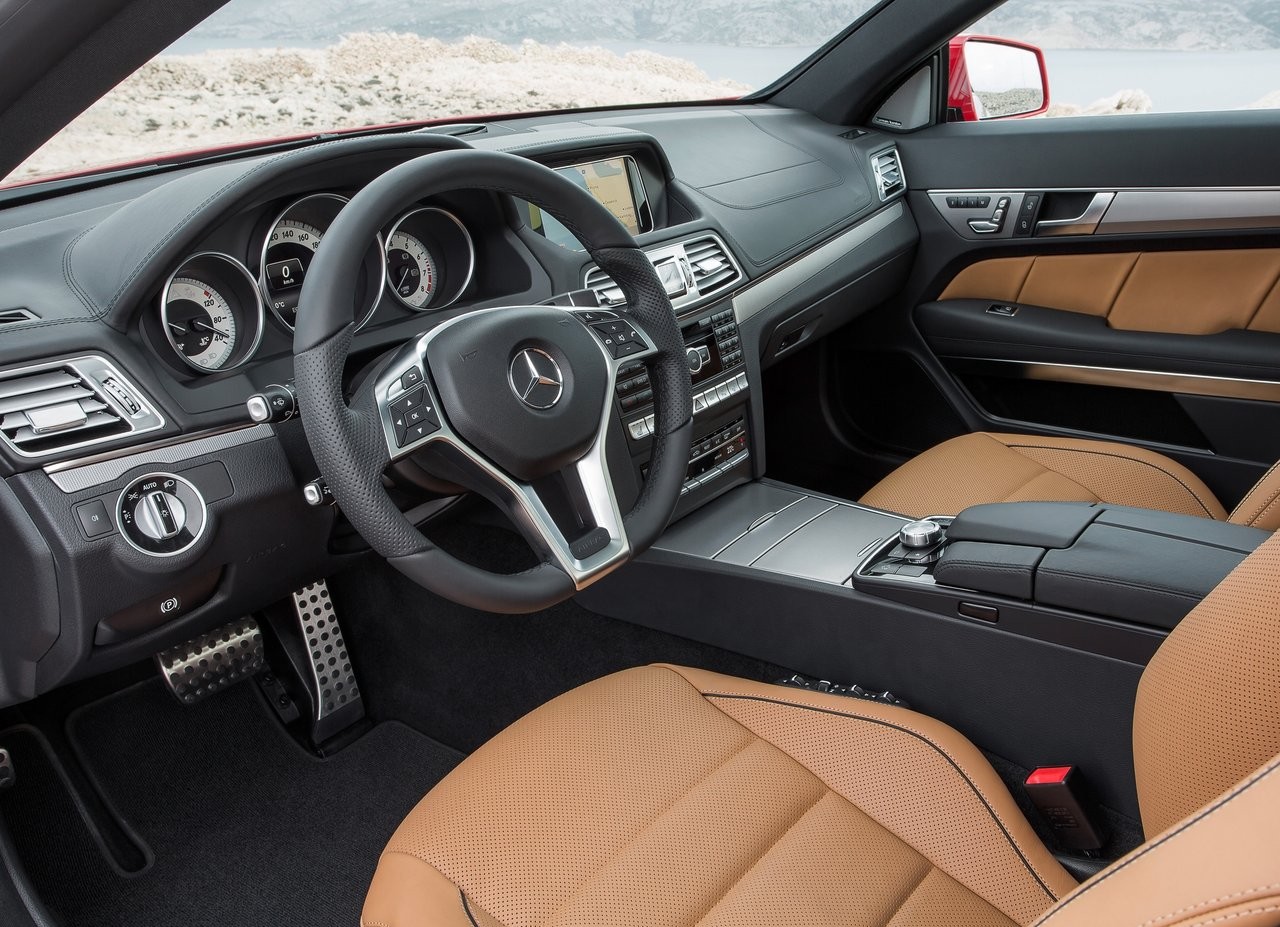
- Fuel-efficient powertrains
- Refined seven-speed automatic transmission
- Capable dynamics
- Well-weighted, direct steering
- Small turning circle
- Suspension lacks compliance
- Cramped rear seats
- Turbo-diesel engines lack refinement
- Foot-operated parking brake
Review: Mercedes-Benz C207.I E-Class Coupe (2009-13)
Overview
Released in July 2009, the Mercedes-Benz C207 Series I (C207.I) E-Class Coupe was a four-seat coupe. Manufactured in Germany, the rear-wheel drive C207 E-Class Coupe range initially consisted of the E 350 and E 500 models, with the E 250 CDI BlueEfficiency and E 250 CGI BlueEfficiency following in September. In July 2011, the E 350 was fitted with a more powerful 3.5-litre V6 petrol engine and the 5.5-litre V8 engine in the E 500 was replaced with a 4.7-litre twin-turbocharged V8 unit.
| Years | Engine | Trans. | Peak power | Peak torque | |
|---|---|---|---|---|---|
| E 250 CDI | 2009-13 | 2.1-litre twin-turbo diesel I4 (OM651) | 5sp auto | 150 kW at 4200 rpm | 500 Nm at 1600-1800 rpm |
| E 250 CGI BE | 2009-13 | 1.8-litre turbo petrol I4 (M271) | 5sp auto | 150 kW at 5500 rpm | 310 Nm at 2000-4300 rpm |
| E 350 BE | 2009-11 | 3.5-litre petrol V6 (M272) | 7sp auto | 200 kW at 6400 rpm | 350 Nm at 3000-5100 rpm |
| E 350 | 2011-13 | 3.5-litre petrol V6 (M276) | 7sp auto | 225 kW at 6500 rpm | 370 Nm at 3500-5250 rpm |
| E 500 | 2009-11 | 5.5-litre petrol V8 (M273) | 7sp auto | 285 kW at 6000 rpm | 530 Nm at 2800-4800 rpm |
| 2011-13 | 4.7-litre twin-turbo petrol V8 (M278) | 7sp auto | 300 kW at 5000-5750 rpm | 600 Nm at 1600-4750 rpm |
Dimensions
Compared to the C209 CLK Coupe which it replaced, the C207 E-Class Coupe was 79 mm longer (at 4717 mm), 46 mm wider (1786 mm), 5 mm lower (1408 mm) and had a 45 mm longer wheelbase (2760 mm). Furthermore, the E-Class coupe had a drag coefficient of 0.24 Cd, the lowest of any passenger car then in production.
Suspension
Like the Mercedes-Benz W212 E-Class on which it was based, the C207 E-Class Coupe had three-link front suspension with MacPherson struts and multi-link rear suspension. The E-Class was also fitted with Mercedes-Benz’s ‘Agility Control’ suspension as standard. An amplitude-selective damping system, ‘Agility Control’ utilised:
- A bypass channel in the shock absorber’s piston pin; and,
- A control piston moving within a separate oil chamber.
When linear travel of the shock absorber was low, the control piston forced oil through the bypass channel to produce a smaller damping force at the damper valve. For greater shock absorber movements, the control piston moved to close the bypass channel so full damping force was available. To be clear, Agility Control used hydromechanics, not electronics to vary suspension behaviour.
Safety equipment
Standard safety equipment for the Mercedes-Benz C207 E-Class Coupe included dual front airbags, a driver’s knee airbag, front and rear side (thorax) airbags, full-length curtain airbags, ABS, electronic brake force distribution, brake assist, electronic stability control, traction control, active front seat head restraints, seatbelt pre-tensioners and load limiters for all seats, driver fatigue monitoring (‘Attention Assist’), hill hold and hill start assist. The E 350 and E 500 were also equipped with lane departure warning.
In the event of a pedestrian collision, the bonnet would also rise by 50 mm to cushion the pedestrian’s subsequent impact.
Features: Mercdes-Benz C207 E-Class Coupe
Standard features for the Mercedes-Benz C207 E 250 CDI BlueEfficiency and E 250 CGI BlueEfficiency models included 17-inch alloy wheels, COMAND APS with a seven-inch colour display, ten speaker Audio 20 sound system, CD/DVD player, auxiliary inputs (MP3/USB/iPod), 6GB music hard-drive, satellite navigation, voice recognition and Bluetooth connectivity, dual-zone climate control air conditioning (‘Thermatic’), leather seats, power adjustable front seats, cruise control with SPEEDTRONIC speed limiter and brake intervention, directional bi-xenon headlights, daytime running lights, rear parking sensors and park guidance display (‘Parktronic’), automatic headlights, rain-sensing wipers, cooled glovebox, 1/3 to 2/3 split and folding rear seats, a Nappa leather-wrapped steering wheel and gearshift lever, remote central locking, power windows and heated mirrors, a tilt and reach adjustable steering wheel, height adjustable front seats, ambient lighting, memory settings (front seats, steering column and door mirrors), tinted glass, tyre pressure monitoring, a 12 volt power outlet, trip computer and an immobiliser.
The C207 E 350 Coupe was further equipped with a six-disc CD/DVD changer, reversing camera, automatically dipping side mirrors when reversing, power folding mirrors and an electrochromatic rear view mirror.
Beyond this, the C207 E 500 Coupe featured 18-inch AMG alloy wheels with Dynamic Handling package (including ‘sports’ mode), a fifteen speaker Harman/Kardon Logic7 surround system, three-zone climate control air conditioning (‘Thermotronic’), ventilated and heated front seats, steering wheel gearshift paddles, proximity key, power-operated panoramic sunroof, TV tuner and proximity key. The E 500 AMG was also fitted with the AMG Sports package as standard (see below).
E-Class Coupe: Elegance and Avantgarde
The E-Class Coupe was also available in Elegance and Avantgarde variants. The Elegance variants featured burr walnut interior trim, light colour roof lining and black instrument cluster highlights; Avantgarde variants, however, had black ash wood trim, black roof lining and silver instrument cluster highlights.
E-Class Coupe Sport Editions
From October 2012, the Elegance and Avantgarde variants were also available as Sport Editions. These Sport Editions featured 19-inch five twin-spoke alloy wheels, sports suspension, perforated front brake discs and AMG body styling.
E-Class Coupe: AMG Sports package
The E-Class Coupe was also available with an optional AMG Sports package which included 18-inch AMG alloy wheels with a six twin-spoke design, 235/40 R18 front and 255/35 R 18 wide-base tyres, perforated front disc brakes, sports suspension settings, AMG body-styling, included AMG front apron with large air intakes, AMG side skirts and AMG rear apron with a black insert. Inside, there was synthetic black ‘Artico’ leather, multi-contour sports seats, an AMG sports steering wheel in Nappa leather, brushed stainless steel sports pedals with black rubber studs and floor mats with AMG lettering.
Brochure
Review: Mercedes-Benz C207.II E-Class Coupe (2013-16)
Overview
Released in July 2013, the Mercedes-Benz C207 Series II (C207.II) E-Class Coupe range consisted of the E 200 BlueDirect, E 250 BlueDirect, E 250 CDI BlueEfficiency and E 400 BlueDirect. In addition to the revised range, the C207.II E-Class Cabriolet introduced updated styling, an upgraded interior and a range of ‘intelligent drive’ technologies. Furthermore, all petrol and diesel engines had an ECO start/stop function which enabled the engine to shut down when the vehicle was stationary in traffic. The C207.II E-Class also introduced a new electromechanical Direct-Steer system which combined the speed-dependent power assistance with variables ratio across the steering angle range.
Visually, the C207.II E-Class Coupe could be identified by its new headlights with partial LED lights and a single headlamp lens (full LED headlights were available as an option), redesigned bonnet, single-lens headlights with dual LED fibre-optic cables and new tail-lights with horizontally structured LEDs.
Inside, the dashboard had full-width two-part trim and could be specified in a wood or aluminium look, while new elements included a three-tube instrument cluster, a trapezoidal framed display in the head unit and an analogue clock between the two central air vents. The centre console was also redesigned and the gear lever was omitted as the multifunction steering wheel had a ‘Direct Select’ lever and gearshift paddles.
| Years | Engine | Trans. | Peak power | Peak torque | |
|---|---|---|---|---|---|
| E 200 BlueDirect | 2013-16 | 2.0-litre turbo petrol I4 (M274) | 7sp auto | 135 kW at 5500 rpm | 300 Nm at 1200-4000 rpm |
| E 250 BlueDirect | 2013-16 | 2.0-litre turbo petrol I4 (M274) | 7sp auto | 155 kW at 5500 rpm | 350 Nm at 1200-4000 rpm |
| E 400 BlueDirect | 2013-16 | 3.0-litre biturbo petrol V6 (M276) | 7sp auto | 245 kW at 5250-6000 rpm | 480 Nm at 1600-4000 rpm |
| E 250 CDI | 2013-16 | 2.1-litre twin-turbo diesel I4 (OM651) | 7sp auto | 150 kW at 3800 rpm | 500 Nm at 1600-1800 rpm |
Safety equipment
Compared to its C207.I predecessor, standard safety equipment for the Mercedes-Benz C207.II E-Class Coupe was extended to include:
- Collision Prevention Assist (radar-based collision warning with adaptive Brake Assist): operated at speeds between 7 km/h and 250 km/h, and could detect stationary objects when driving at speeds of up to 70 km/h. Collision Prevention Assist monitored the distance to the vehicle ahead, would provide visual and audible warning to the driver if there was a collision risk and would optimise braking power (adaptive Brake Assist) for when the driver depressed the brake pedal. At initial speeds of less than 20 km/h, Collision Prevention Assist could prevent rear-end collisions;
- Blind Spot Assist: at speeds above 30 km/h, two radar sensors in the rear bumper would monitor the driver’s blind spot and warn the driver against dangerous lane changes.
The Mercedes-Benz C207.II E 250, E 250 CDI and E 400 were further equipped with Mercedes-Benz’s ‘intelligent drive’ assistance systems which utilised a ‘Stereo Multi-Purpose Camera’ positioned in front of the rear-view mirror. The stereo camera had two lenses set at an angle of 45 degrees and with an overall range of 500 metres, providing a three-dimensional view of the area up to 50 metres ahead of the vehicle. For these models, the standard-fit ‘Driving Assistance Package Plus’ included:
- Distronic Plus (adaptive cruise control with brake warning): an ‘adaptive’ cruise control system which used two short-range radar sensors positioned behind the front bumper to monitor the road up to 30 metres ahead, and a long-range radar located behind the radiator grille which had a range of 200 metres. Operating at speeds up to 200 km/h, Distronic Plus used an electronic control unit to analyse the information from both radar systems to calculate the engine, automatic transmission and braking parameters required for proximity control. As such, Distronic Plus could automatically apply the brakes to prevent the vehicle from becoming too close to traffic ahead (the time interval could be specified) and accelerate back to the set speed when traffic allowed. To accelerate from rest, the driver only needed to operate the Distronic stalk on the steering column or briefly depress the accelerator pedal. With Distronic Plus, automatic deceleration of up to four (4) m/s2was possible. If Distronic Plus detected that heavier braking was required, a warning light would illuminate in the instrument cluster and be accompanied by an audible warning. Furthermore, the electronic proximity control system could be activated independently of Distronic Plus at speeds over 30 km/h to alert the driver if they were approaching another vehicle too rapidly;
- Steering Assist: operating in conjunction with Distronic Plus and at speeds up to 130 km/h, Steering Assist used a stereo camera located behind the windscreen to detect road markings. If the vehicle was detected to be drifting out of its lane, Steering Assist would warn the driver and provide steering intervention to keep the vehicle in its lane;
- Pre-Safe Brake (autonomous emergency braking): using two 24 GHz sensors behind the front bumper which had a range of 30 metres and a 77 GHz radar which had a range of 200 metres, Pre-Safe Brake operated at speeds between 30 km/h and 200 km/h, and at speeds below 70 km/h if the vehicle was approaching a stationary queue of traffic. Around 2.6 seconds before the anticipated moment of impact, an audible warning would sound and a red warning would appear in the tachometer. Around 1.6 before the calculated impact, the first stage of Pre-Safe Brake would initiate partial braking autonomously with around 40 per cent of the maximum braking power (approximately four (4) m/s2); the Pre-Safe occupant protections system would also be activated. If the driver then applied the brakes, maximum braking force would be made available. If the driver failed to react, Pre-Safe Brake would – in its second stage – initiate autonomous emergency braking (i.e. maximum braking power) around 0.6 seconds before the unavoidable collision to reduce the severity of the impact;
- Pre-Safe Plus: could anticipate an imminent rear-end collision and warn the vehicle behind by flashing the tail-lights. The Pre-Safe system would then deploy occupant protection measures and apply the vehicle’s brakes to prevent secondary accidents;
- BAS Plus with Cross-Traffic Assist: used a 24 GHz radar sensor with a range of 30 metres and a 77 GHz radar sensor with a range of 200 metres to monitor the distance to the vehicle ahead and would warn the driver if there was a risk of a collision. Brake Assist Plus could detect vehicles when travelling at speeds up to 200 km/h, and stationary objects when the driver was travelling at 7 km/h to 72 km/h. Significantly, Brake Assist Plus could calculate the necessary brake force assistance to prevent a rear-end collision, build up that pressure in the braking system and provide it as soon as the brake pedal was depressed for ‘the best possible deceleration’. The Cross-Traffic Assist function could operate at speeds up to 72 km/h and used the stereo camera and radar sensors to detect traffic that was crossing in front of or behind the vehicle. If detected, the driver would receive visual and audible alerts;
- Active Lane Keeping Assist: could detect when the adjacent lane was occupied (including oncoming traffic) and prevent the driver from inadvertently exiting from the lane when it was not safe to do so by applying a corrective braking force to the wheels on one side of the vehicle; and,
- Active Blind Spot Assistance: active at speeds above 60 km/h, a corrective braking force would be applied to the wheels on one side of the vehicle if the driver attempted to change lanes when a vehicle was detected in the driver’s blind spot.
Features: Mercedes-Benz C207.II E-Class Coupe
Standard features for the Mercedes-Benz C207.II E 200 Coupe included 19-inch alloy wheels, Mercedes-Benz’s ‘COMAND APS’ (Cockpit Management and Data Auto Pilot System) with a 17.8 cm TFT colour display, CD/DVD player, HDD navigation, 10 GB music storage, auxiliary inputs (USB/SD card), Bluetooth interface for mobile phone connectivity and audio streaming, voice activation (‘Linguatronic’) and internet browser, climate control air conditioning (‘Thermatic’), ‘Artico’ synthetic leather upholstery, power adjustable front seats, cruise control with variable limiter (‘Speedtronic’), a reversing camera, rear parking sensors with park guidance display (‘Parktronic’), automated steering for parallel and reverse parking (‘Active Park Assist’), rain-sensing wipers, a leather-wrapped steering wheel, 1/3 to 2/3 split and folding rear seats, remote central locking, power windows and heated mirrors with folding function, a height and reach adjustable steering wheel, electrochromatic rear view and door mirrors, ambient lighting, a 12 volt power outlet, trip computer and an immobiliser.
Beyond this, the E 250 and E 250 CDI Coupes added leather upholstery, front seat memory settings, full LED headlights with adaptive high beam assist, a proximity key (‘Keyless Go’), a power adjustable steering wheel and remote boot locking.
The E 400 Coupe was further equipped with a Harman Kardon Logic 7 surround sound system, digital radio (DAB+), a power-operated glass sunroof and a 360-degree camera which could provide a virtual bird’s eye view of the vehicle while dynamic guide lines could assist with parking manoeuvres.
Brochure
Related links
- Specifications: Mercedes-Benz C207.II E-Class Coupe (March 2014)
- Specifications: Mercedes-Benz C207.II E-Class Coupe (September 2014)
- Mercedes-Benz Australia: Mercedes-Benz E-Class Coupe
- Wikipedia.org: Mercedes-Benz C207 E-Class Coupe
